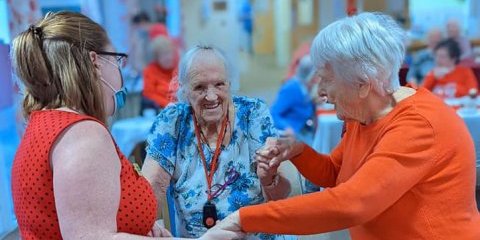
Following safeguarding procedures to protect elderly residents is vital for any care home. Safeguarding creates a framework to follow which is designed to result in a high level of care, with the residents’ best interests at its heart.
What does safeguarding mean in a care home?
Under the guidance of the Care Quality Commission (CQC), safeguarding means protecting the health, well-being and rights of the individual, making sure they are safe from any harm or abuse. Safeguarding residents should be the central focus of every care home. Organisations that care for vulnerable adults must show that there are the correct procedures and processes in place to achieve this.
What safeguarding responsibilities do care home staff have?
When an elderly loved one becomes unwell, their care requirements can become complex. Whether in a nursing home or residential care home, safeguarding policies exist to protect the well-being of that individual. Safeguarding in a care home means caring for vulnerable adults, following procedures designed to keep them safe, including fire safety.
Responsibilities for care homes to safeguard their residents are extensive, so staff must be trained around new policies and provide the highest level of care for residents without restricting their independence. Care home staff must carry out assessments in line with the resident’s needs, including:
- Ensuring beds are comfortable and clean and other forms of equipment are of a high standard and used correctly and safely.
- Making sure that the potential for falls throughout the home is minimal for residents.
- The monitoring and management of drugs and other dangerous substances.
- Hot water, hot substances and hot surfaces are controlled and within a safe environment with extra support, if it is required.
- Monitoring and preventing the spread of infection and diseases through high standards of hygiene for both residents and staff.
- Learning how to manage and respond to the possibility of aggression or challenging behaviour.
By approaching these factors with a balanced risk approach, care home staff can cater for each resident, creating a safe and pleasant environment.
Which safeguarding policies must care home staff follow?
There are many safeguarding policies that care home staff must follow. Central to these safeguard policies is “The Care Act 2014”. This act lays out the responsibility of care and support between health and local authorities. Both of which have a responsibility to promote well-being and safety within caregiving communities.
There are six core principles that staff follow to help achieve the correct safeguarding of residents.
Principle 1: Empowerment
Each resident requires a different form of care. With a personalised approach, care home staff can begin to build strong relationships that offer support and empowerment to those in care.
Principle 2: Prevention
With the correct training, care home staff can spot the potential for abuse or harm and can take action to prevent it before it happens.
Principle 3: Proportionality
Care home staff will act in the least intrusive way whilst having care home residents’ best interests at heart.
Principle 4: Protection
Staff will provide support and protection for any resident suffering or wanting to openly report abuse, following the necessary safeguarding procedures.
Principle 5: Partnership
Access to communities that collaborate with each other to help protect, prevent and report abuse.
Principle 6: Accountability
Safeguarding should be transparent and followed at all times by care home staff.
Do we need new safeguarding policies?
Safeguarding policies are there to provide residents with protection from abuse and neglect. It’s not always easy to identify abuse and neglect as it can present in different ways. An example is certain residents being restricted from carrying out everyday activities, whilst others are not.
It’s important to remember that abuse is not always physical, For example, racial slurs, which should never be tolerated. It’s vital that safeguarding procedures are continuously updated and implemented accordingly.
How to report a safeguarding issue in a care home
Any concerns or suspicions about abuse or potential neglect need to be reported. Family members are allowed to report their suspicions openly, which is known as raising a “safeguarding alert”. This can be done by contacting your local authorities and raising your concerns. At this stage, suspicion without proof is enough to make a report. You can also raise your concerns to legal experts, or the Care Quality Commission itself by completing a safeguarding concern notification form.